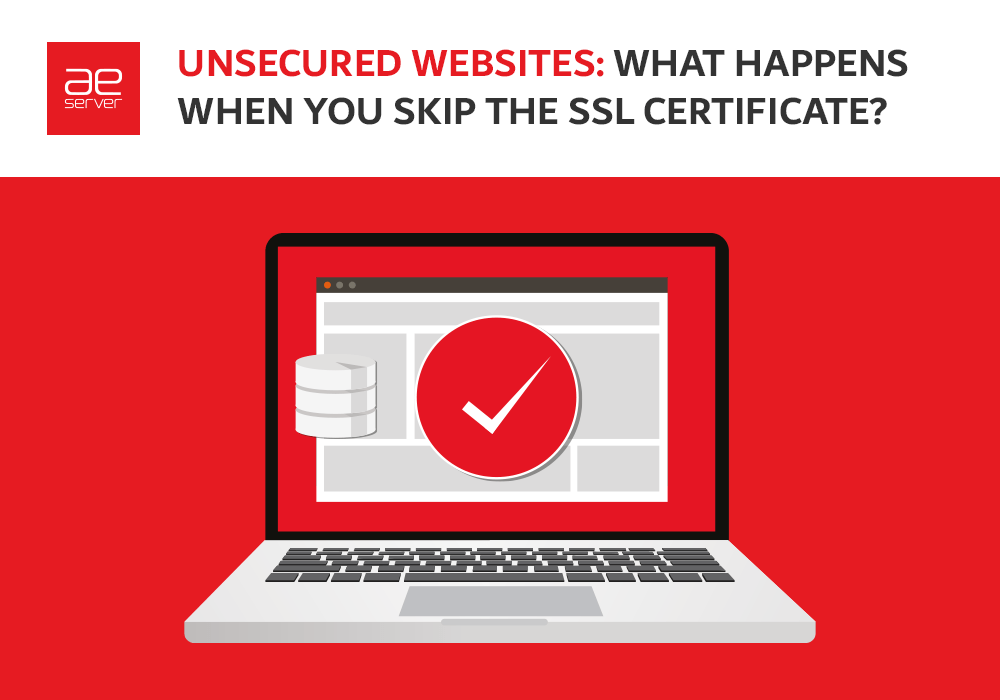
Tips to Secure Your Website: Best Practices
We live in a world where online presence is integral to triumph. This way, preserving your page against cybersecurity threats is paramount. Cyberattacks are becoming increasingly composite. They make it imperative for biz to rank robust defense measures. This guide explores essential tips on how to secure a website. We offer the best solutions. That fortifies your cybernate presence and protects sensitive data. As innovation evolves, so do the methods employed by malicious actors. It ranges from data breaches to ransomware attacks. Addressing vulnerabilities in your page’s guard protects your business and client info. Also, it shields your reputation.
It is from implementing strong paroles and regular updates to incorporating monitoring tools. These best practices are indispensable in navigating the complex landscape of website security. You can fortify your page against potential threats and ensure resilience.
What is Website Security?
It encompasses a set of measures and practices designed to safeguard a website from various cyber threats. Also, it ensures the confidentiality, integrity, and availability of data. In the digital landscape, websites face a multitude of security risks. They include unauthorized access, data breaches, malware infections, and denial-of-service attacks. Practical steps involve implementing robust authentication processes. They encrypt data transmissions, regularly updating software and plugins to patch vulnerabilities. Also, use firewalls and monitor for suspicious activities. Website security is crucial to protect sensitive user info and maintain trust.
It is vital to uphold the functionality of online platforms. With the increasing sophistication of cyber threats, a comprehensive approach embraces staying vigilant. It is adopting the latest security technologies. Also, it realizes proactive strategies to mitigate potential risks. It safeguards the holder’s interests. It ensures a secure and trustworthy online experience for users interacting with the page. So, knowing what a secure website is will be crucial.
Related: WordPress Cyberattacks and How to Prevent Them
Best Practices for Website Security
Executing hale defense steps is paramount in an era of increasing cyber threats. It is vital to safeguard your site and the sensitive data it holds. Explore these best practices to fortify your digital presence. Also, to ensure a secure online environment for your business and users. You can enhance your defenses against cyber threats and create a resilient online presence. Do it by integrating these best practices into your website security plans.

Update OS Regularly
They are fundamental to maintaining a robust page defense. Software developers consistently release updates to address newly discovered vulnerabilities. Also, to improve system performance. By promptly applying these updates, you fortify your website against potential cyber threats. Also, you ensure a resilient defense against evolving security challenges:
- Patch-Known Vulnerabilities: OS updates often include patches that fix known vulnerabilities. Update your website’s content management system, plugins, and server software. It is essential to mitigate the risk of exploitation.
- Improved Security Features: Updates frequently introduce enhanced website security features. Also, it strengthens your website’s defenses. These features may include improved encryption protocols and resistance to emerging threats.
- Compatibility and Performance: Updating software ensures compatibility with the latest technologies. It improves overall performance. It contributes to a seamless user experience. It reduces the risk of security issues arising from outdated components.
- Stay Ahead of Exploits: Cybercriminals actively target outdated software with known vulnerabilities. Regular updates help you stay one step ahead, minimizing the window of opportunity for potential exploits.
- Automate Update Processes: Consider it where possible to streamline and hurry the app of patches. Automated systems help ensure that critical updates are not overlooked.
You establish a preventative defense mechanism. This way, you rank regularly, updating your web page’s software components. Bolster your website’s security posture. Also, maintain a trustworthy online environment for you and your users.
Implement HTTPS
It is a foundational practice that helps protect your website and user data. HTTPS encrypts the communication between a user’s browser and the website server. It safeguards sensitive information from potential threats:
- Secure Data Transmission: Such protocol ensures a safe for data transmission. It safeguards user information such as login credentials, personal details, and payment information.
- Data Integrity: HTTPS helps maintain the integrity of the data exchanged between the user and the website. It prevents unauthorized tampering or alterations during transmission.
- Compliance with Modern Standards: This protocol is a best practice. It aligns your site with modern website security expectations and regulatory requirements.
- Protection Against Man-in-the-Middle Attacks: HTTPS mitigates the risk of man-in-the-middle attacks. There, an adversary intercepts communication between the user and the website. This way, you ensure a secure and private browsing experience.
- Improved User Experience: Users often associate the padlock icon in the browser address bar with a secure connection. Implementing HTTPS contributes to a positive user experience. It is by providing visual reassurance of site security.
By prioritizing the implementation of such protocol, your site meets contemporary security standards. It establishes a strong base for comprehensive site security management.
Advanced Security Measures
Implementing such steps is imperative in the ever-evolving landscape of cyber safety threats. It helps to fortify your digital assets and protect against sophisticated attacks. Elevating your shield posture goes beyond standard practices. It incorporates advanced plans to safeguard sensitive data. Also, to maintain the integrity of your online presence.
Behavioral Analytics
It represents a cutting-edge approach to website security. Also, it utilizes advanced techniques to analyze user behavior for proactive threat detection. This sophisticated method goes beyond traditional security steps. It provides organizations with a dynamic real-time tool. It helps to identify anomalies and potential security risks:
- Pattern Recognition: Such analytics leverages machine learning algorithms. They help to identify patterns in user behavior. Also, to establish a baseline of everyday activities and detect deviations that may be defense threats.
- User Profiling: Organizations can distinguish between legitimate users and potential threats. They do it by creating detailed user behavior profiles. It enhances the accuracy of threat detection and reduces false positives.
- Insider Threat Detection: This approach is efficient in identifying insider threats. It is by detecting unusual behavior with malicious intent or compromised credentials.
- Continuous Monitoring: Traditional defense measures may be periodic. Behavioral analytics provides continuous monitoring. It allows for real-time analysis and rapid response to emerging security incidents.
- Dynamic Risk Assessment: It helps organizations to assess the risk associated with users. It adjusts security measures based on evolving patterns and potential threats.
- Improved Incident Response: Behavioral analytics enhances such capabilities by focusing on early detection. It allows organizations to contain and mitigate defense threats before they escalate swiftly.
Organizations can strengthen their website security posture. They need to harness the power of behavioral analytics. It is gaining valuable insights into user activities and potential threats. That traditional security measures might overlook.
Zero Trust Architecture
It is a revolutionary cybersecurity model. That challenges traditional assumptions about trust within a network. It operates under the fundamental principle that trust is never assumed and must be continually verified. This paradigm shift aims to enhance website security in an era of sophisticated cyber threats. It is by adopting a more granular and dynamic approach to access control:
- Verification at Every Step: In a ZT model, all users, devices, and applications are subject to continuous validation. It is regardless of their location or the network they are accessing.
- Least Privilege Access: Users grant the least minor access necessary to perform their job functions. They reduce the risk associated with compromised credentials. They limit potential damage in the event of a security incident.
- Micro-Segmentation: Networks segment into smaller, isolated zones. They are limiting lateral movement for potential attackers. They contain the impact of a website security breach on a specific segment.
- Multi-Factor Authentication: MFA is a cornerstone of Zero Trust. It adds an extra layer of verification beyond passwords to ensure the identity of users and devices.
- Continuous Monitoring: Zero Trust involves monitoring network activities, user behavior, and device health. It allows for prompt detection and response to any suspicious or anomalous activities.
- Dynamic Risk Assessment: The Zero Trust model assesses the risk associated with every access request. It is often based on various factors, such as adapting website security measures in real time.
- Secure Access from Anywhere: Organizations embrace remote work and cloud-based services. Zero Trust provides a safe framework for accessing resources from any location. It is without compromising security.
- Application-centric security: It shifts the focus from network-centric to application-centric security. It ensures that each application is well protected, irrespective of the network’s trust level.
Organizations can establish a more resilient web page protection posture by adopting a ZTA. It reduces the attack surface and minimizes the impact of potential defense incidents. This approach is especially critical in today’s dynamic and evolving threat landscape.
Conclusion
On the World Wide Web, robust facility site security management is invaluable. As cyber threats evolve, so must our strategies to protect sensitive data and maintain the integrity of web platforms. This exploration of advanced defense measures. Among them are implementing HTTPS, behavioral analytics, and ZTA. They underscore the multifaceted nature of modern cyber safety. It is an era where the digital realm is central to biz operations. The commitment to advanced safety practices becomes a cornerstone of success. Integrating these key measures positions your organization at the forefront of website security. Ensure a safe and trustworthy online environment for your business and its users. Stay vigilant, stay updated, and espouse the dynamic landscape of digital protection with Aeserver.



